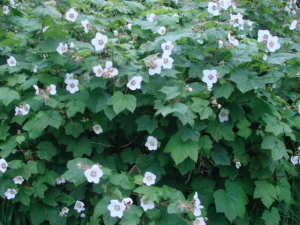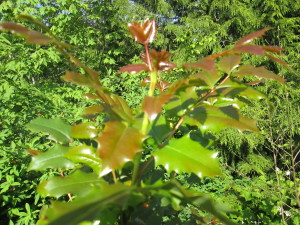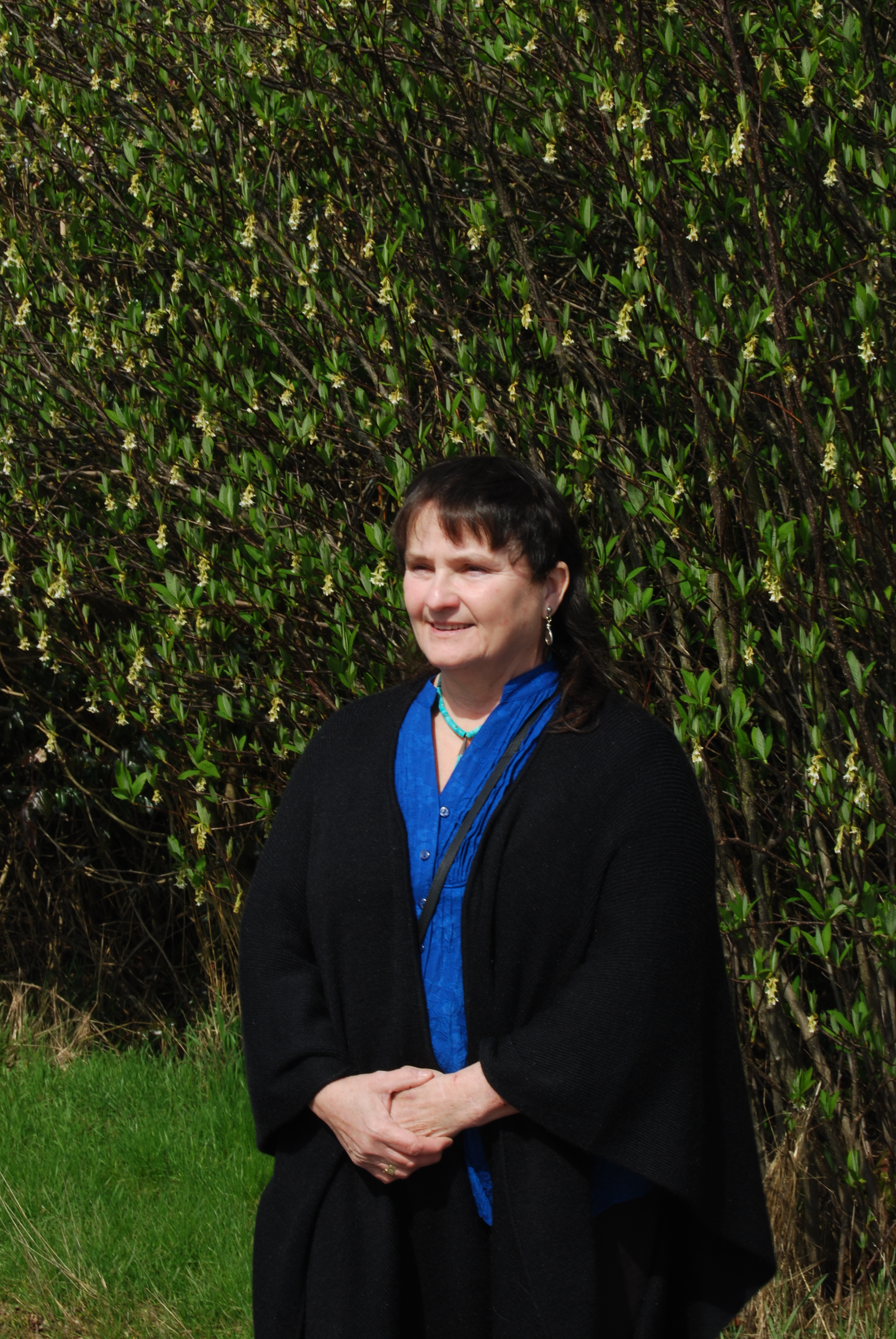When the road serenaded me with its song, I followed the music into #Canada. We hopped the ferry out of Anacortes headed for Sydney, Vancouver Island. Once there, we kicked our bikes into gear and zipped over to the motel to rest up for the coming day and a trip to #Butchart Gardens.
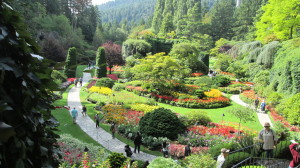 Loved it! As do about a million visitors a year. We even ran into a family of bears among the trees.
Loved it! As do about a million visitors a year. We even ran into a family of bears among the trees.
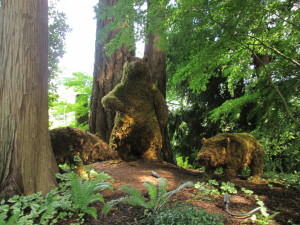 Fortunately, they were of the vegetative kind.
Fortunately, they were of the vegetative kind.
Not far down the road, we whipped into the Butterfly Garden.
This beauty is actually a moth! 
Several birds flitted about the gardens. 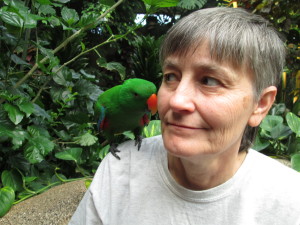 This one decided to land on my wife’s shoulder and tell her a secret. I didn’t ask Deva to reveal the bird’s secret.
This one decided to land on my wife’s shoulder and tell her a secret. I didn’t ask Deva to reveal the bird’s secret.
After seven plus hours on my feet, I was ready to just cruise the roads of Vancouver Island the next day. The day after that, we caught the ferry to Tsawwassen on the mainland of Canada. From there we rode on into Harrison Hot Springs. The internet teems with articles about the Hot Springs, so I will simply say that the town of Harrison, in addition to the hot springs, can boast that their little chocolate store has lip-smackin’ good English Toffee.
The following day found us scrambling up the mountain side to stand at the base of Bridal Veil Falls. In spite of it being mid-summer (an off season to view the Falls) and the area being in a four-month drought, it was worth the sore muscles to stand there, gazing up toward the source. 
The days blended into one another and our next notable stop was the small town of Hope, British Columbia–not far from Harrison Hot Springs. Hope is a bit of what I would call a ‘sleeper’ town–it will absolutely surprise and charm you. This small town of 5,969 people not only hosts an art gallery well worth the time to check out, but carvings done by internationally reknown carvers scatter throughout the town.
I was especially pleased to meet Harry of Harry and the Hendersons. 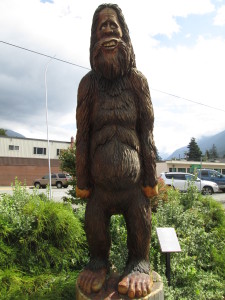
The next town that hosted us required a ride over the hill. 
Princeton sits in the middle of, well, nowhere. After dinner at a local restaurant, we decided to call it a day and veg out. Not given to listening to the news and being out of touch with all media, we finally turned on the television as we flopped out on the bed. The next day’s ride would be on the Crow’snest Highway, or BC-3, into Osoyoos then drop into the United States by way of Oroville and onto Omak on US-97.
As the news flashed to the scene of a blazing inferno, I gaped at the reader line across the bottom of the television screen: #Omak, #Washington. Needless to say, we turned around and headed back to the United States via Chilliwack, British Columbia, to Sumas in the States.
Unfortunately, our shock wasn’t to end with leaving Canada. We arrived in Darrington to a beautiful sunset and the smell of smoke. 
Approximately a year and a half ago the town of Darrington wrestled with the devastation of the Highway 530 Mudslide that destroyed homes and took lives. Last night we once again gathered at the Community Center to face fire this time. Though our small fire only encompasses approximately eighty acres on the side of Jumbo Mountain that towers above the town, concern lay heavy on the room. Avalanche chutes and winds could easily spread the burning debris.
Only thirty-three miles away–less if you draw a straight line between the towns–the Skagit Complex fires–eight of them–rage around the small towns of Newhalem and Diablo. Only a small percentage of those fire perimeters are contained, meaning that a line has been built that will stop the progress of the fire.
Just over the mountains, fire devastates communities. Three firefighters lost their lives. Homes and farms and dreams go up in columns of black smoke.
All over the states of Washington, Montana, Idaho, Oregon and Northern California fire claims lives and homes; businesses and farms.
Less talked about are the countless thousands of animals and birds–both wild and domestic–that have lost their lives to the greedy flames. The decimation of their homes and food supply will have tragic, long lasting consequences. Some of the species may not fully recover for years, if ever.
So while I urge you to continue to send prayers, and relief aid, to the victims of those most devastating fires, such as the Okanogan Complex Fires, I would like to ask that you send a prayer, a thought out to the Universe for the wildlife, wild birds and domestic animals that are suffering.
Meanwhile, here in Darrington, we watch our small fire on Jumbo Mountain as we send relief efforts and prayers to those who face raging infernos.
To view more photos from Biker Granny, go to http://www.pinterest.com/ayawalksfar
Be sure to sign up right here on the right sidebar for my newsletter and this blog so you won’t miss special offers, inspirational quotes, and other great content.
Drop by facebook and give me a shout at http://www.facebook.com/ayawalksfar
Be a fan at http://www.facebook.com/AyaWalksfarAuthor
Like mysteries, check out my latest on http://www.amazon.com/author/ayawalksfar


